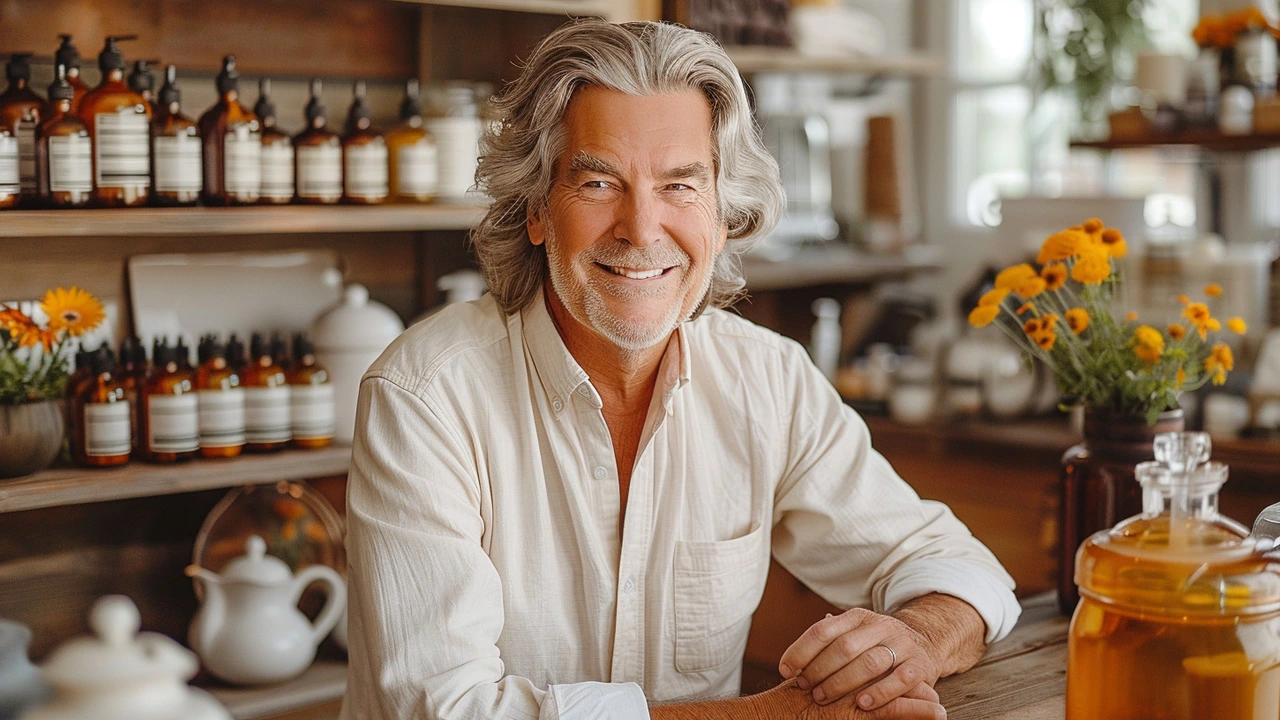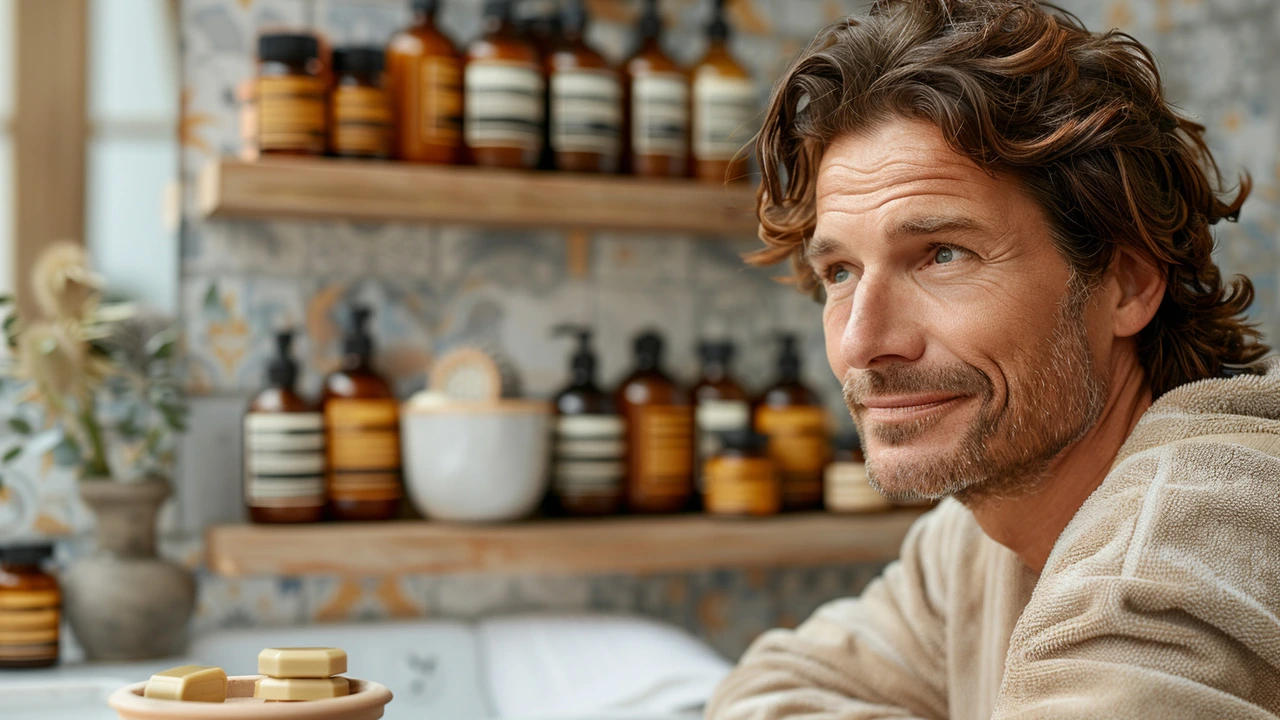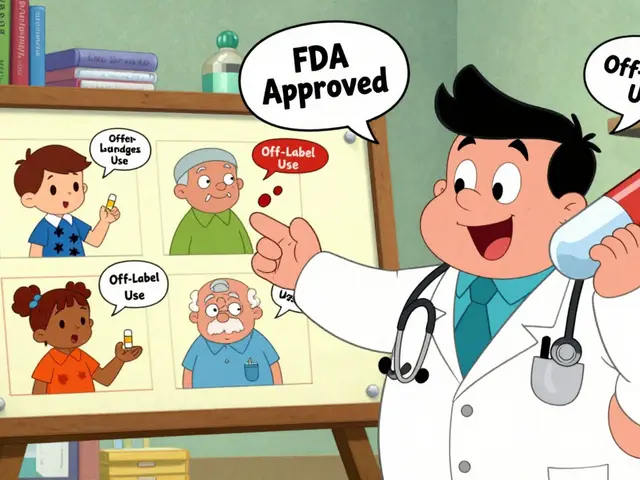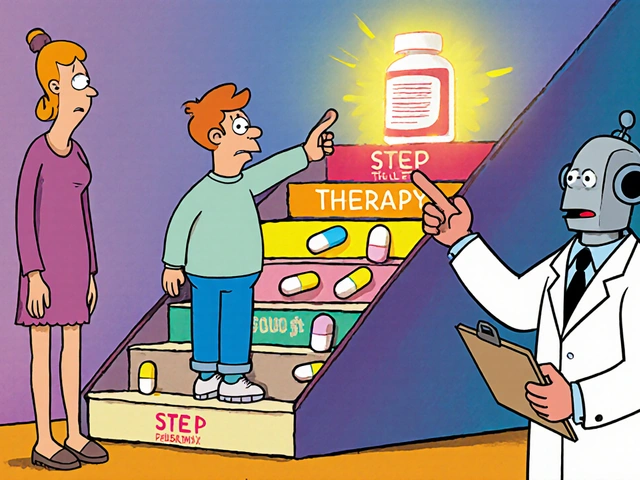Jock itch, scientifically known as tinea cruris, is often associated with athletes. But did you know it's also a concern for older adults? This skin condition, caused by a fungal infection, thrives in warm, moist areas of the body.
In seniors, jock itch can be particularly frustrating. It’s not just about dealing with the itching and redness; it’s about understanding why it happens and how to treat it effectively. Let's dive deeper into what brings it on and how to manage it with treatments that really work.
- Understanding Jock Itch in Seniors
- Causes of Jock Itch
- Recognizing the Symptoms
- Effective Treatment Options
Understanding Jock Itch in Seniors
Jock itch is an uncomfortable and sometimes embarrassing condition, but it's important to remember that it’s highly common and manageable. For older adults, jock itch can be especially problematic, not just due to the itching and irritation but also because the skin tends to become thinner and more fragile with age. This can lead to the skin barrier being compromised more easily, making seniors more susceptible to fungal infections.
One significant factor contributing to jock itch in seniors is the reduction in physical activity and changes in body composition. As we age, sweat glands don’t function as optimally, but certain areas like the groin can still remain warm and moist, creating a perfect breeding ground for fungi like Trichophyton rubrum, which is the most common fungus responsible for jock itch.
Additionally, seniors are more likely to have weaker immune systems, especially those with underlying conditions like diabetes, which can exacerbate the issue. Diabetes leads to higher blood sugar levels that can feed fungal infections, making it harder for the body to fight off jock itch.
Older adults living in communal settings, such as nursing homes, are also at a higher risk. These environments can facilitate the spread of fungal infections due to shared spaces and facilities. It’s essential to maintain good hygiene practices and try to keep shared areas clean and dry.
According to Dr. Robert Brodell, a professor of Dermatology, "Understanding the specific challenges faced by older adults is crucial in effectively managing jock itch. Prevention and prompt treatment are important, especially in communal living settings."
Jock itch in seniors might also be confused with other skin conditions like eczema or psoriasis. That’s why getting a proper diagnosis from a healthcare professional is vital. Misdiagnosis can lead to the wrong treatments, which might aggravate the condition. Knowing the exact cause ensures that the most effective treatment can be selected.
Understanding these nuances can help in recognizing why older adults might be more prone to jock itch and what steps can be taken to address it. Focusing on good personal hygiene, timely medical consultations, and appropriate treatment can significantly reduce the discomfort and prevent recurrent infections.

Causes of Jock Itch
Jock itch, or tinea cruris, is frequently encountered in older adults due to several contributing factors. The primary culprit is a fungal species known as Dermatophytes. These fungi thrive in warm, damp environments, which make areas like the groin particularly vulnerable. Living in humid climates or wearing tight, non-breathable clothing can create very favorable conditions for these fungi to flourish.
One of the key reasons older adults are more prone to jock itch is changes in skin structure and function that happen with aging. As the skin begins to lose its natural ability to retain moisture and elasticity, the protective barrier becomes compromised which makes it easier for fungi to invade. Furthermore, older adults often have a weakened immune system, which can contribute to a susceptibility for fungal infections. Treatment of other chronic illnesses and the use of certain medications, such as corticosteroids, also reduces the body's natural defense against infections.
Another factor to consider is the increased likelihood of having other skin conditions or infections that can present alongside jock itch. Conditions like diabetes, for example, can significantly affect skin health and increase the risk of developing fungal infections. High blood sugar levels can result in environments conducive to the growth of fungi, making it essential to manage blood sugar effectively to mitigate risks.
Poor hygiene habits or difficulties maintaining personal cleanliness due to mobility issues are additional reasons why older adults might develop jock itch. When it becomes hard to keep certain areas clean and dry, it creates a breeding ground for fungi. Nursing homes and other communal living arrangements can sometimes be at higher risk of outbreaks if proper hygiene and sanitation protocols are not strictly followed.
Dr. Amanda Smith, a dermatologist with over 20 years of experience, states, "Another often overlooked cause is the potential transmission from shared objects like towels or bedding. Fungi can persist on these surfaces and easily transfer from one person to another. Ensuring personal items are not shared and are regularly cleaned can significantly reduce the risk.”
“It’s important for caregivers and family members to be vigilant about maintaining a clean environment for older adults,” Dr. Smith emphasizes.
In summary, the causes of jock itch in older adults are multifactorial. From environmental factors to age-related changes in skin physiology, and weakened immune defenses, all these elements combine to create a scenario where fungal infections can easily take hold. Understanding these underlying causes is the first step in effective prevention and management of the condition.

Recognizing the Symptoms
Spotting the signs of jock itch early can be key to managing the condition effectively. For older adults, it’s important to be aware of what to look for. The first indication of jock itch might be a persistent itch in the groin area. The itch can sometimes spread to the buttocks and inner thighs. This can lead to constant discomfort especially during hot and humid conditions.
Another common symptom is a red, circular rash. This rash may have well-defined edges and often features a raised, scaly border. The center of the rash might appear clearer or even normal in some cases, giving it a ring-like appearance which is very typical for fungal infections. This distinctive look can help differentiate it from other skin irritations. Often, the rash's border will be redder or darker compared to the surrounding skin.
As the infection progresses, the skin can become flaky or cracked. This can lead to painful breaks in the skin which increase the risk of secondary infections. Health professionals mention that the appearance of blisters or pustules can also occur, although this is less common. These additional symptoms can sometimes confuse the diagnosis, so consulting a healthcare provider is recommended if these signs appear.
Dr. Samuel Mark, a dermatologist with over 20 years of experience, shares, "It's crucial not to ignore the early symptoms of jock itch, especially in older adults. Prompt treatment can prevent further complications and ensure a quicker recovery."
If the condition is not treated, the symptoms of jock itch can worsen. The rash can spread to other regions of the body, causing more extensive irritation and discomfort. Sweating and tight clothing can intensify the itch and rash, making everyday activities challenging. For older adults, this can affect sleeping patterns and overall comfort, leading to additional stress and potential health issues.
Older adults might experience symptoms more severely due to factors like thinner skin and a weaker immune system. It’s essential to maintain proper hygiene and keep the affected area clean and dry to manage the symptoms effectively. Recognizing the signs early and taking proper action can make a significant difference in managing jock itch and preventing it from becoming a persistent problem.

Effective Treatment Options
When it comes to treating jock itch in older adults, a multifaceted approach is usually the most successful. The first step is to keep the affected area clean and dry. Moisture and warmth create an ideal environment for fungi to thrive, so pay extra attention to hygiene.
One practical method is to use antifungal creams or powders. Over-the-counter options like clotrimazole or miconazole can be very effective. These should be applied to the affected area after washing and drying it thoroughly. For more severe cases, your doctor might prescribe stronger antifungal medications. It’s important to follow the treatment plan to the letter, even if the symptoms seem to disappear quickly.
Avoiding tight clothing can also make a big difference. Loose, breathable garments allow air to circulate and keep the area dry. Opt for natural fabrics like cotton instead of synthetic ones. This small change can significantly reduce moisture buildup and help in preventing recurrence.
Washing clothes, towels, and bed linens regularly is crucial. Fungi can cling to fabrics and pose a risk of reinfection. Hot water and a good laundry detergent should be sufficient to kill any lingering spores. Consider adding an antifungal laundry additive for an extra layer of protection.
Personal hygiene shouldn’t be underestimated. Shower daily and make sure to dry yourself thoroughly, paying special attention to the groin area. If you're on the go and can't shower immediately after physical activities, carry body wipes to clean the area temporarily.
Some people find relief through natural remedies, though these should be used with caution. Tea tree oil has antifungal properties and can be applied diluted to the skin. Always test a small area first to ensure you’re not allergic. Consult your healthcare provider before trying any alternative treatments to make sure they’re safe for you.
Diet can also play a role in managing skin conditions. A balanced diet rich in vitamins and minerals supports overall skin health. Foods high in vitamin C, zinc, and omega-3 fatty acids can help your skin recover and stay healthy. Probiotics, found in yogurt and supplements, might also support your immune system to fight off fungal infections.
According to Dr. Jane Smith, a dermatologist with over 20 years of experience, “Good hygiene and diligent treatment are key to managing jock itch. Older adults should not ignore persistent symptoms, as they can indicate underlying health issues.”
If over-the-counter treatments don’t work and the infection persists or worsens, it’s essential to see a healthcare provider. Sometimes, jock itch can be resistant to standard treatments, and a professional can offer stronger alternatives or investigate other potential causes.



